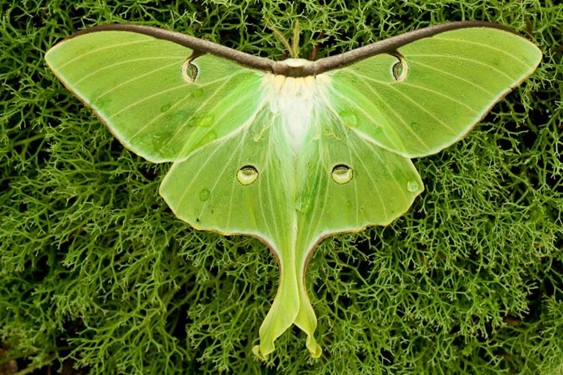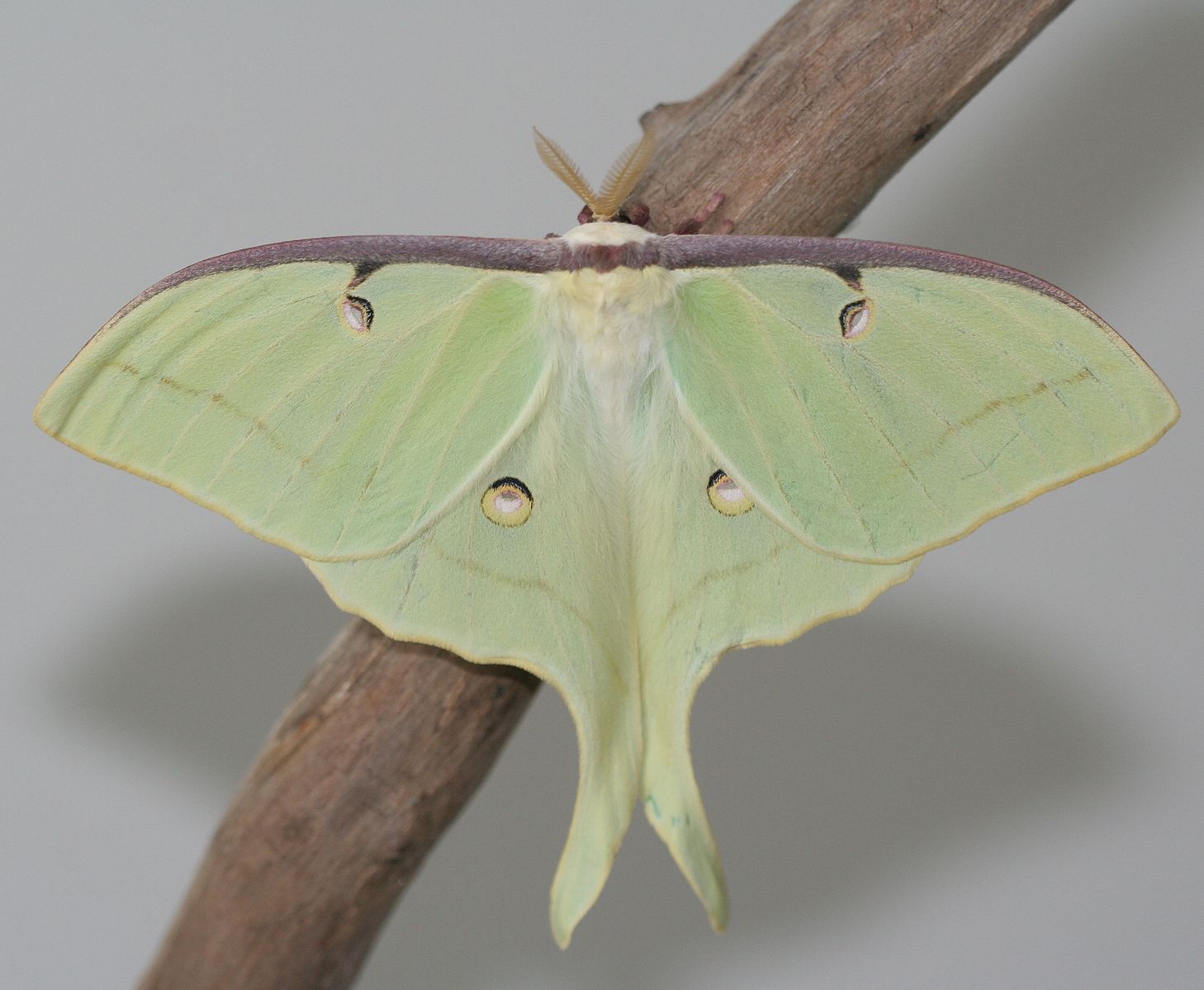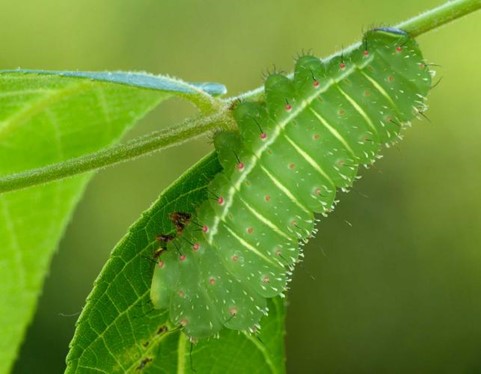Agriculture and Natural Resources Blog
Contact
Jon Zawislak
Assistant Professor, Apiculture and Urban Entomology
Phone: 501-671-2222
Fax: 501-671-2252
Email: jzawislak@uada.edu
Office:
University of Arkansas
Division of Agriculture
Cooperative Extension Service
2301 S. University Avenue
Little Rock, AR 72204
Austin Jones
Instructor and Director of Undergraduate Education,
Entomology and Plant Pathology
Phone: 479-575-2445
Email: akj003@uark.edu
Office:
University of Arkansas
Dale Bumpers College of
Agricultural, Food, and Life Sciences
Entomology and Plant Pathology
PTSC 217
University of Arkansas
Fayetteville, AR 72701

Blog Series: What's that bug?
Luna moth
By Jon Zawislak, Assistant Professor – Apiculture and Urban Entomology, Austin Jones, Instructor and Director of Undergraduate Education – Entomology and Plant Pathology, and Whitney Haigwood, Technical and Social Media Writer – Agriculture and Natural Resources
Have you ever spotted a Luna moth? While this species isn’t scarce, sighting one of these spectacular creatures during daylight hours can be a rare occurrence.

FEMALE - Luna moth resting in the grass. Bright green color and wing markings help her to camouflage and provide protection against predators.
(Image source: Missouri Department of Conservation)
Luna moths are primarily a nocturnal species – Luna was the ancient Roman moon goddess – and the reason these remarkable insects are also known as the American moon moth. Entomologists know them as Actias luna, in the family Saturniidae. This group is also known as the giant silk worm family, but they are actually only distantly related to the true silk moths, Bombyx mori, the true silk moth, in the family Bombycidae.
Luna moths are commonly found in eastern parts of North America, and they are a native species to Arkansas. Here in our state, there are likely two to three generations of Luna moths from March to September each year, with about 8 to 10 weeks between generations.
Their bright green luminescent wings have reddish-purple markings and a magnificent wingspan of 3 – 5 inches, making them one of the largest species of moths found in the Natural State. These moths use their size, coloration and wing markings to protect themselves. Their coloration allows them to camouflage against trees and leaves, and the “eye spots” on their four wings act to confuse and intimidate predators, such as birds, which may think they are being watched by something larger. Their hindwings also feature elegant tails that are thought to help them avoid predation by confusing the echolocation of hungry bats.

MALE - Luna moth resting on a branch, with wing color a lighter shade of green compared to a female.
(Image source: Wiki Commons)
Luna moths are a tree-dwelling species. In the southern United States, the caterpillars prefer to feed on leaves of native hardwoods such as sweet gum, persimmon, hickory, walnut and sumac. While they can have an appetite, these creatures are not pests. Caterpillars are few enough in the landscape to cause serious defoliation of trees, and the adult moths do not eat anything at all. They have a mouth, but it is vestigial (a big word for ‘functionless’). They do not even have a digestive system! Luna moths use energy stored from the caterpillar stage to live their short 7 to 10-day adult lifespan.
Females of the species are brighter in color and slightly larger than males. The females have slender fuzzy antennae, while the males have thicker, featherlike antennae, which they use to locate females at great distances in the forest. Males can migrate for many miles, as their thick fuzzy antenna detect pheromones released by the female moths when it is time to mate. After mating, female Luna moths lay clusters of eggs on the underside of the leaves of their preferred tree. Egg-laying may take a couple of days, resulting in 200-400 eggs. After this process, the female moth dies, leaving her eggs to hatch within 1 to 2 weeks.
The caterpillars are bright green with a series of yellow lines and red spots running down both sides. They begin to feed on the tree in which they hatched. To protect itself from predators, a Luna moth caterpillar can raise the front portion of its body and make a warning sound by clicking its mandibles. It can also regurgitate a distasteful fluid to ward off predators.

LUNA CATERPILLAR - climbing on a small branch, with visible red dot markings down its sides.
(Image source: Missouri Department of Conservation)
Over the next month, these caterpillars continue to feed and will molt five times, turning from a bright green to a reddish-brown before spinning a cocoon. It takes 2 to 3 weeks for the caterpillar to spin its paper brown colored cocoon, irregular shaped and often made with leaf particles. The shape and color of the cocoon provide camouflaged protection as the moth develops inside.
Luna moths usually emerge from their cocoons during the morning hours, and it takes some time for their wings to dry out before they are ready to fly. From here the cycle continues onto the next generation of the season. First-generation Luna moths are the brightest in color, with subsequent generations having a lighter green to yellow coloring and lighter wing markings.
If you are out at night in the Natural State during the spring thru fall, take a look around. You may happen to spot one of these magnificent moths. Fluttering past you or at rest on a tree, they are a grand sight to behold.
Want to read more about Luna moths? Learn more in this entry from the University of Arkansas Arthropod Museum. You can also read this U of A Division of Agriculture news article on the release of over 100 Luna moths.
References:
Missouri Department of Conservation. Luna Moth. Field Guide. https://mdc.mo.gov/discover-nature/field-guide/luna-moth
HGIC, Clemson Cooperative Extension. (2020, August 6). Luna Moth. https://hgic.clemson.edu/factsheet/luna-moth/
Barber, Jesse R., et al. "Moth tails divert bat attack: evolution of acoustic deflection." Proceedings of the National Academy of Sciences 112.9 (2015): 2812-2816. https://www.pnas.org/doi/full/10.1073/pnas.1421926112